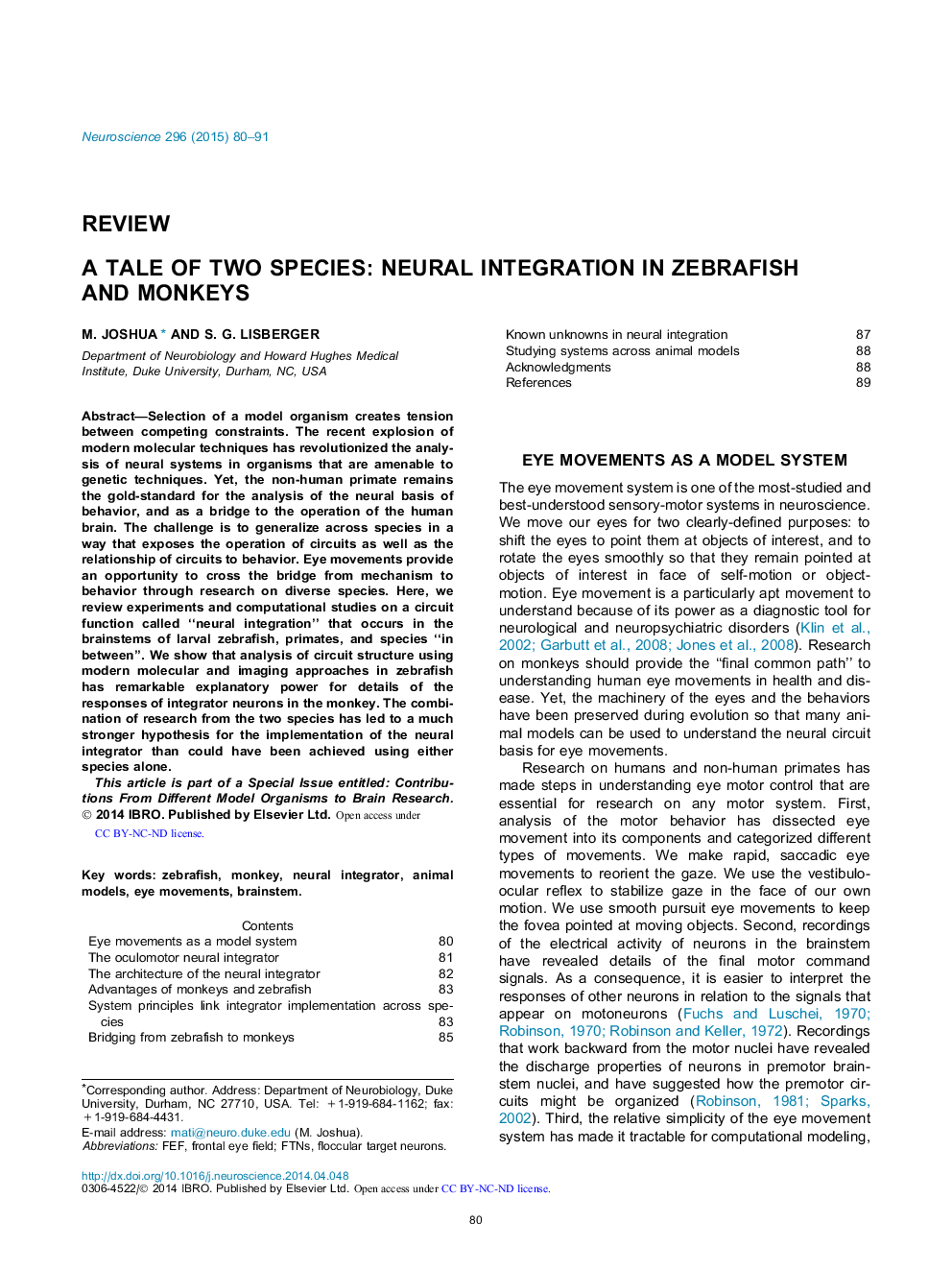| Article ID | Journal | Published Year | Pages | File Type |
|---|---|---|---|---|
| 6272614 | Neuroscience | 2015 | 12 Pages |
â¢Neural integration converts transient to sustained activity in many systems.â¢The oculomotor neural integrator reveals neural implementation of integration.â¢Similar diversity of responses in oculomotor integrator neurons of monkeys and fish.â¢Combination of data from diverse animal organisms is a powerful research tool.
Selection of a model organism creates tension between competing constraints. The recent explosion of modern molecular techniques has revolutionized the analysis of neural systems in organisms that are amenable to genetic techniques. Yet, the non-human primate remains the gold-standard for the analysis of the neural basis of behavior, and as a bridge to the operation of the human brain. The challenge is to generalize across species in a way that exposes the operation of circuits as well as the relationship of circuits to behavior. Eye movements provide an opportunity to cross the bridge from mechanism to behavior through research on diverse species. Here, we review experiments and computational studies on a circuit function called “neural integration” that occurs in the brainstems of larval zebrafish, primates, and species “in between”. We show that analysis of circuit structure using modern molecular and imaging approaches in zebrafish has remarkable explanatory power for details of the responses of integrator neurons in the monkey. The combination of research from the two species has led to a much stronger hypothesis for the implementation of the neural integrator than could have been achieved using either species alone.
